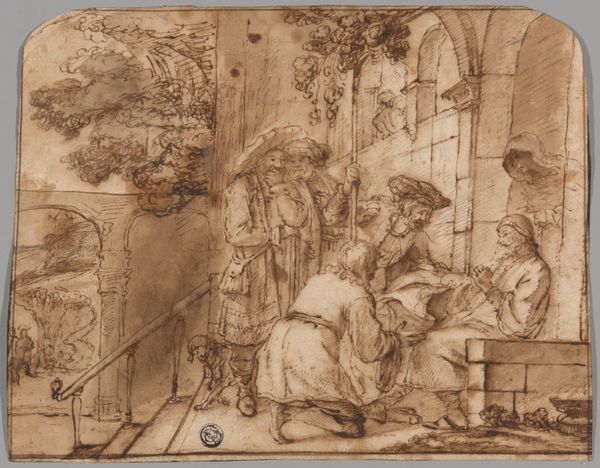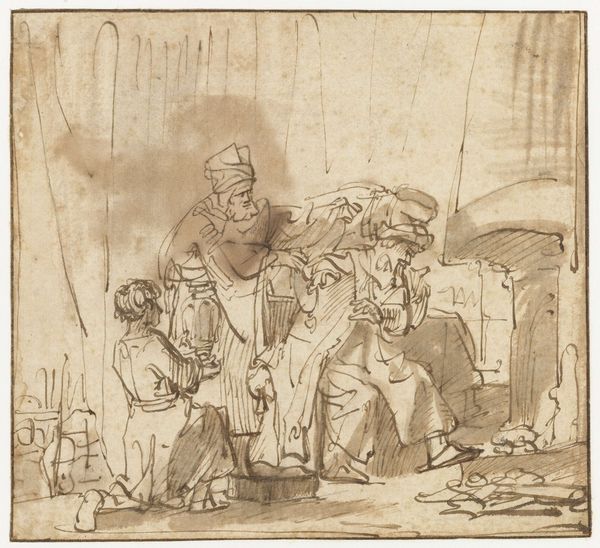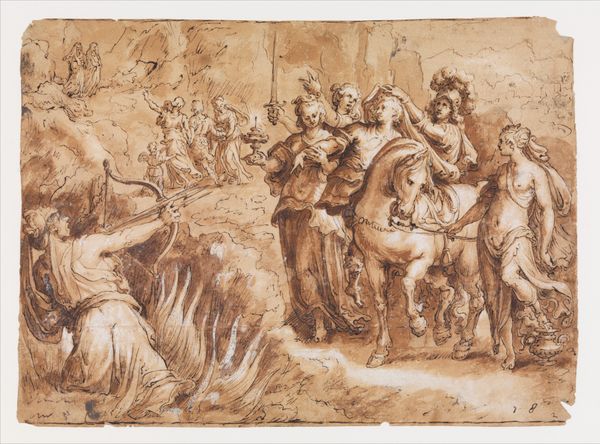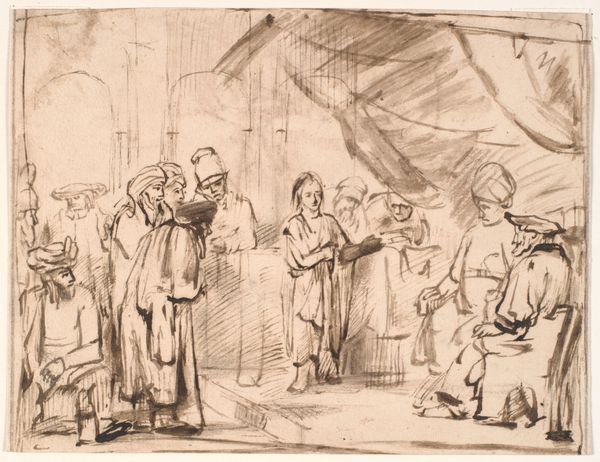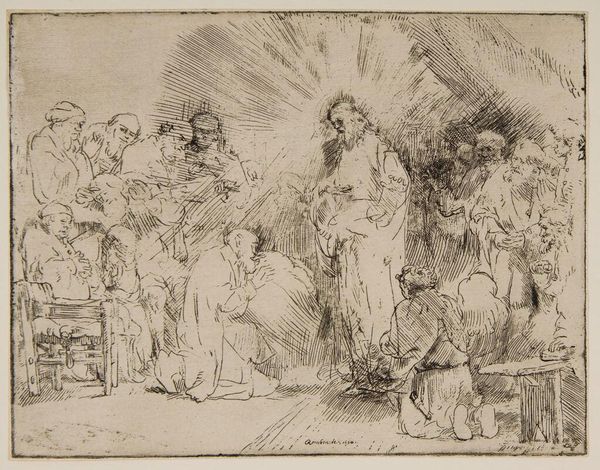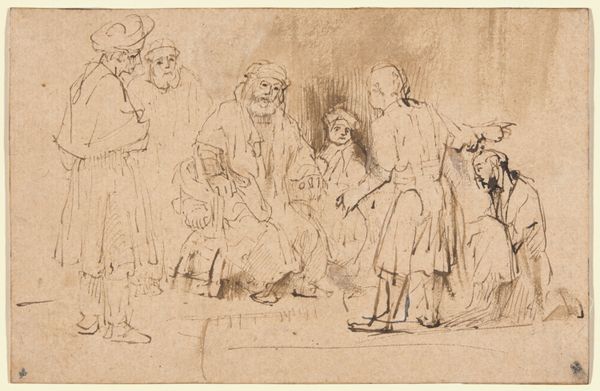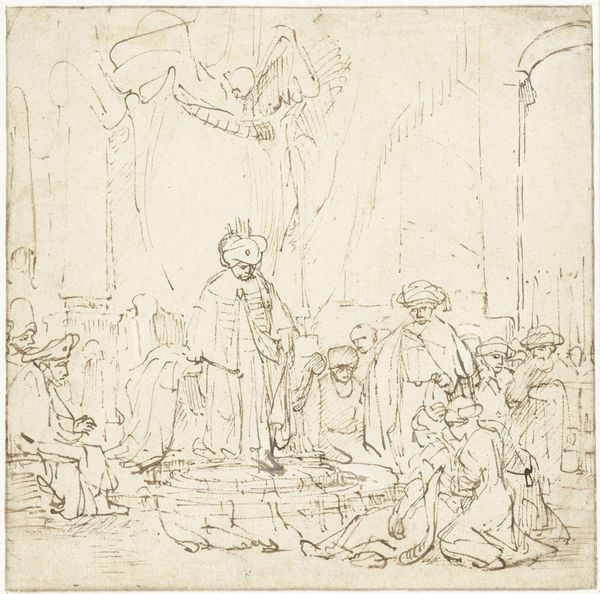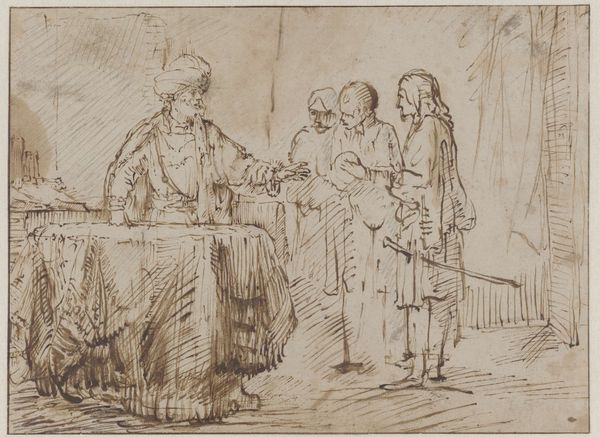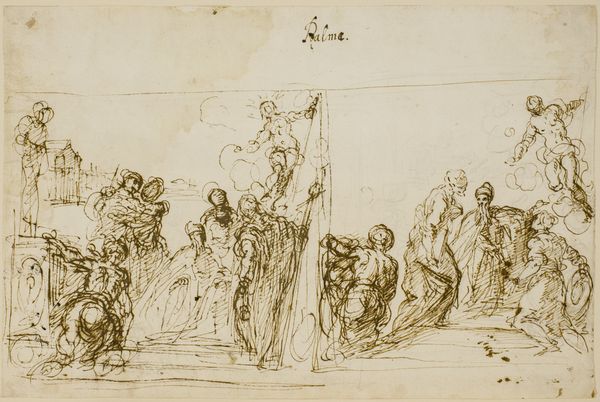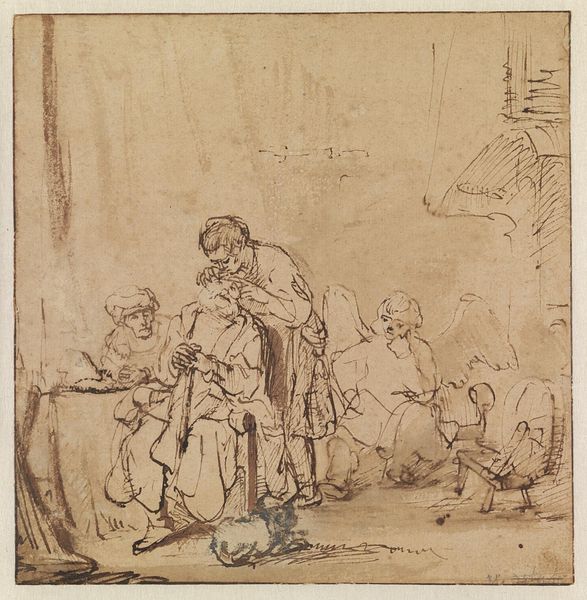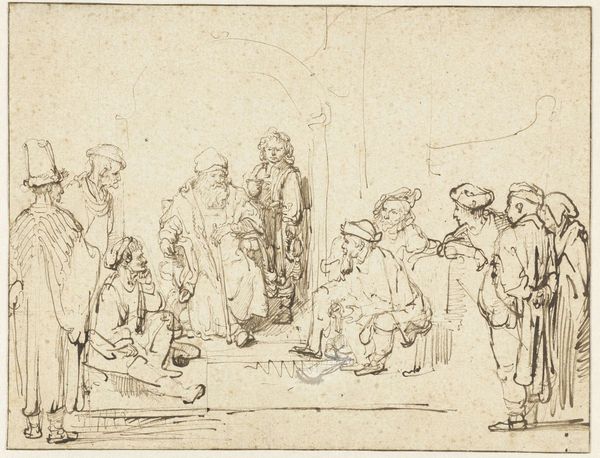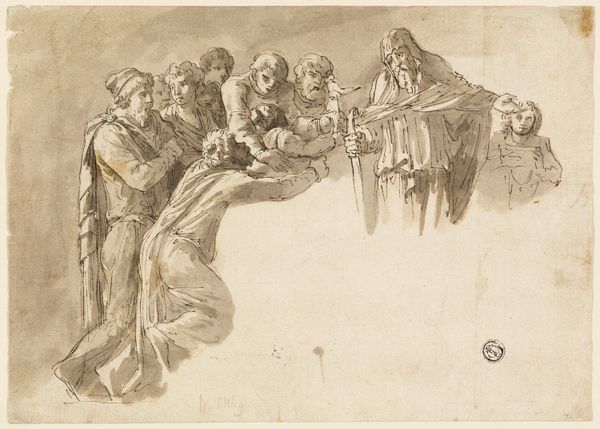
drawing, paper, ink, pen
#
portrait
#
drawing
#
narrative-art
#
baroque
#
paper
#
ink
#
pen
#
history-painting
Copyright: Public Domain: Artvee
Curator: Soaked in umber ink on paper, what secrets do you sense radiating from Rembrandt's drawing, "Joseph Recounting His Dreams," circa the early 1640s? Editor: First impression: controlled chaos. Like looking into a particularly dramatic dream, actually. You've got these precise lines struggling to contain a swirling, emotional intensity. The textures achieved with just pen and ink are fascinating—it’s as though he’s trying to conjure volume and light from thin air. Curator: That chaos speaks to the subject, doesn’t it? This is Joseph, probably nervous and definitely youthful, daring to stand before his elders, telling tales that could overturn everything. He has no earthly power but is emboldened by something greater. I feel the weight of his audacity in the frenetic strokes. Editor: And how carefully he constructs that audacity. Notice the materials – affordable paper, ink – readily available, portable. This wasn’t meant to be grand art in the conventional sense, like oil on canvas in a gilded frame. This feels immediate, more like a rapid prototyping of an idea, of power being disseminated through the simplest of means. What surfaces when a message moves between classes. Curator: Precisely! And it's a particularly Rembrandtian intimacy too, even in a narrative scene. The focus isn't really on pageantry, but on the flickering interiority of each character. Look at Joseph's downcast eyes, and his father's shadowed face – is that skepticism? Or dawning understanding? What do you read on those faces, the result of his ink strokes. Editor: I see labor too – the labor of dreaming, yes, but also Rembrandt's labor. He has transformed basic materials into a valuable commodity through skill, a hot commodity across Europe as merchant capitalism grew. It reflects society’s transition and our increased interest in commodities as a stand in for spiritual understanding. The ink and paper have a story, beyond the subject on view. Curator: A potent point! Thinking about the wider socio-cultural context, it reminds me that Rembrandt often turned to biblical stories to grapple with the human condition. The economic potential but ultimate vulnerability inherent in faith… Joseph becomes every young idealist standing against a crumbling established order. His vision versus history. Editor: It’s really down to a dialogue of materials, isn't it? Joseph’s linen garments were purchased, processed, sewn—they tell a tale of production, versus the “grand vision” the scene supposedly represents. And the means by which art history often obfuscates them with an idealised narrative, something to think about as we absorb and consume such artworks today. Curator: The stories materials can weave! Looking one last time at the picture I see how this dialogue Rembrandt created, so intensely rendered in pen, makes visible things invisible and intangible: what is prophesy after all but materialized hope and possibility? Editor: Indeed! From humble materials, universal conversations take shape and we must ask; who does it serve? And to what ends does art attempt to immortalize ephemeral meaning.
Comments
No comments
Be the first to comment and join the conversation on the ultimate creative platform.
